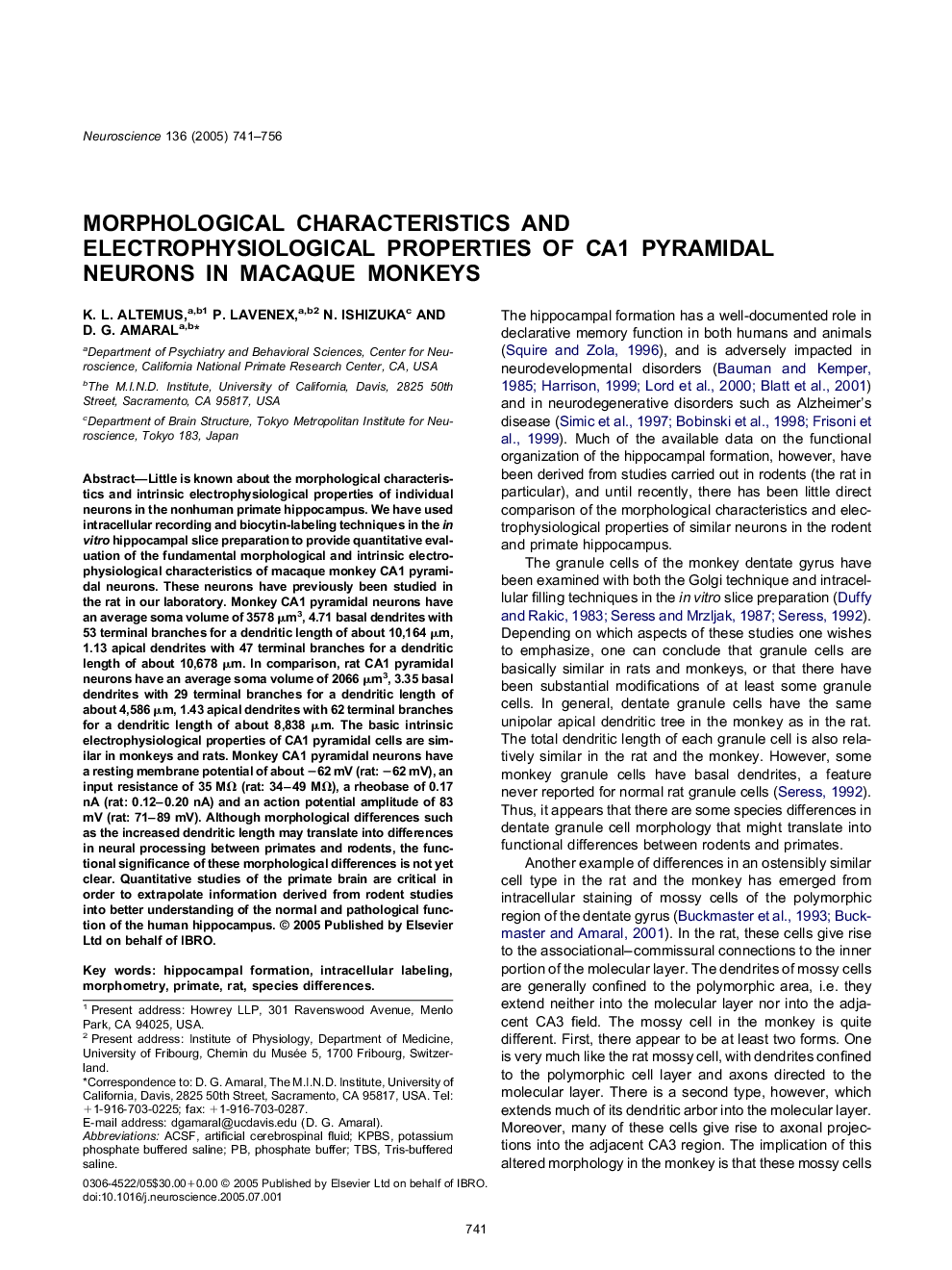| Article ID | Journal | Published Year | Pages | File Type |
|---|---|---|---|---|
| 9425568 | Neuroscience | 2005 | 16 Pages |
Abstract
Little is known about the morphological characteristics and intrinsic electrophysiological properties of individual neurons in the nonhuman primate hippocampus. We have used intracellular recording and biocytin-labeling techniques in the in vitro hippocampal slice preparation to provide quantitative evaluation of the fundamental morphological and intrinsic electrophysiological characteristics of macaque monkey CA1 pyramidal neurons. These neurons have previously been studied in the rat in our laboratory. Monkey CA1 pyramidal neurons have an average soma volume of 3578μm3, 4.71 basal dendrites with 53 terminal branches for a dendritic length of about 10,164μm, 1.13 apical dendrites with 47 terminal branches for a dendritic length of about 10,678μm. In comparison, rat CA1 pyramidal neurons have an average soma volume of 2066μm3, 3.35 basal dendrites with 29 terminal branches for a dendritic length of about 4,586μm, 1.43 apical dendrites with 62 terminal branches for a dendritic length of about 8,838μm. The basic intrinsic electrophysiological properties of CA1 pyramidal cells are similar in monkeys and rats. Monkey CA1 pyramidal neurons have a resting membrane potential of about â62 mV (rat: â62 mV), an input resistance of 35 MΩ (rat: 34-49 MΩ), a rheobase of 0.17 nA (rat: 0.12-0.20 nA) and an action potential amplitude of 83 mV (rat: 71-89 mV). Although morphological differences such as the increased dendritic length may translate into differences in neural processing between primates and rodents, the functional significance of these morphological differences is not yet clear. Quantitative studies of the primate brain are critical in order to extrapolate information derived from rodent studies into better understanding of the normal and pathological function of the human hippocampus.
Keywords
Related Topics
Life Sciences
Neuroscience
Neuroscience (General)
Authors
K.L. Altemus, P. Lavenex, N. Ishizuka, D.G. Amaral,
